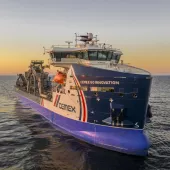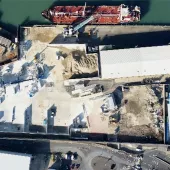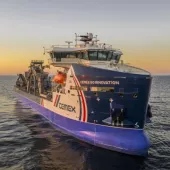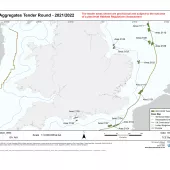Marine Aggregates Capability & Portfolio 2018
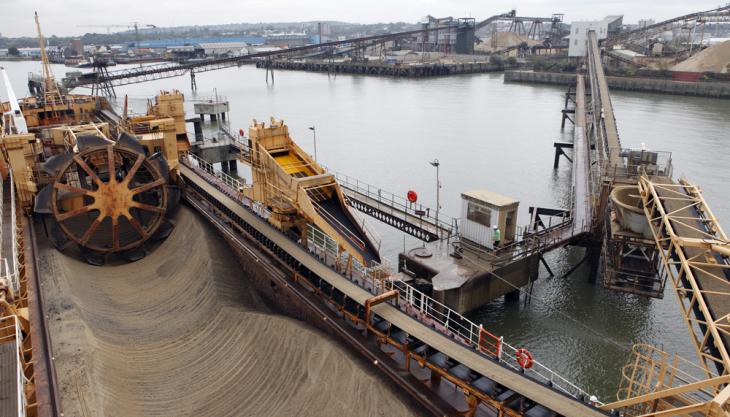
The Crown Estate publishes its fifth Marine Aggregates Capability & Portfolio report
THE Crown Estate has today published its fifth annual Marine Aggregates Capability & Portfolio report, providing an annual summary of current aggregate extraction activity offshore, as well as future resource from the seabed around England, Northern Ireland and Wales.
The report demonstrates the important contribution the sector makes to UK infrastructure development. Resources from the seabed currently contribute to key projects around the country such as the Thames Tideway Tunnel, the new South Quay development in Poole Harbour, as well as coastal-protection schemes such as at Dawlish Warren in Devon.
Key highlights from the report, which covers the calendar year 2017, include:
- Aggregate exports to mainland Europe increased by 11% over the year, from 2.8 million tonnes to 3.1 million tonnes.
- Total extraction volume in 2017 was 19.0 million tonnes, a slight increase from 18.8 million tonnes the previous year, with 72% of total demand met from extraction in the south-east of England.
- The industry currently has statutory planning permission to extract a total of 38.5 million tonnes per year and permitted national reserves total 343 million tonnes, providing a 21-year life at 10-year average extraction rates.
The report complements the Area Involved – 20th Annual Report, which was recently published jointly with the British Marine Aggregate Producers’ Association, and which provides a historical review of dredging intensity in 2017.
It also provides a tool for mineral planning authorities to comply with the National Planning Policy Framework, which requires these authorities to demonstrate they have a steady and adequate supply of aggregates for their requirements through Local Aggregates Assessments.
The Crown Estate has also announced an upgrade to the electronic monitoring system (EMS) that tracks the activities of ships on licensed dredging areas. EMS plays an important role in the stewardship of the natural assets on the seabed and helps to monitor and ensure that the resources are carefully manged. The upgrade is set to be completed by the end of 2018.
Replacing the former decade-old system and representing a significant change in the approach to monitoring dredging activity, the new EMS will use a standardized system across all vessels and provide a ‘one-stop shop’ approach whereby all installation, maintenance and breakdown repair services of the on-board system are delivered by the EMS provider.
Nick Everington, portfolio manager for marine minerals at The Crown Estate, commented: ‘With onshore resources constrained, world-class resources of marine aggregates are playing an increasingly important role in helping the UK meet its infrastructure needs.
‘This report aims to promote the responsible use of offshore minerals as well as providing a useful guide to mineral planning authorities, many of whom recognize the importance that marine aggregates have in meeting regional demand for building materials, both now and in the long term.’
A copy of The Crown Estate’s ‘Marine Aggregates Capability & Portfolio 2018’ can be downloaded below.


